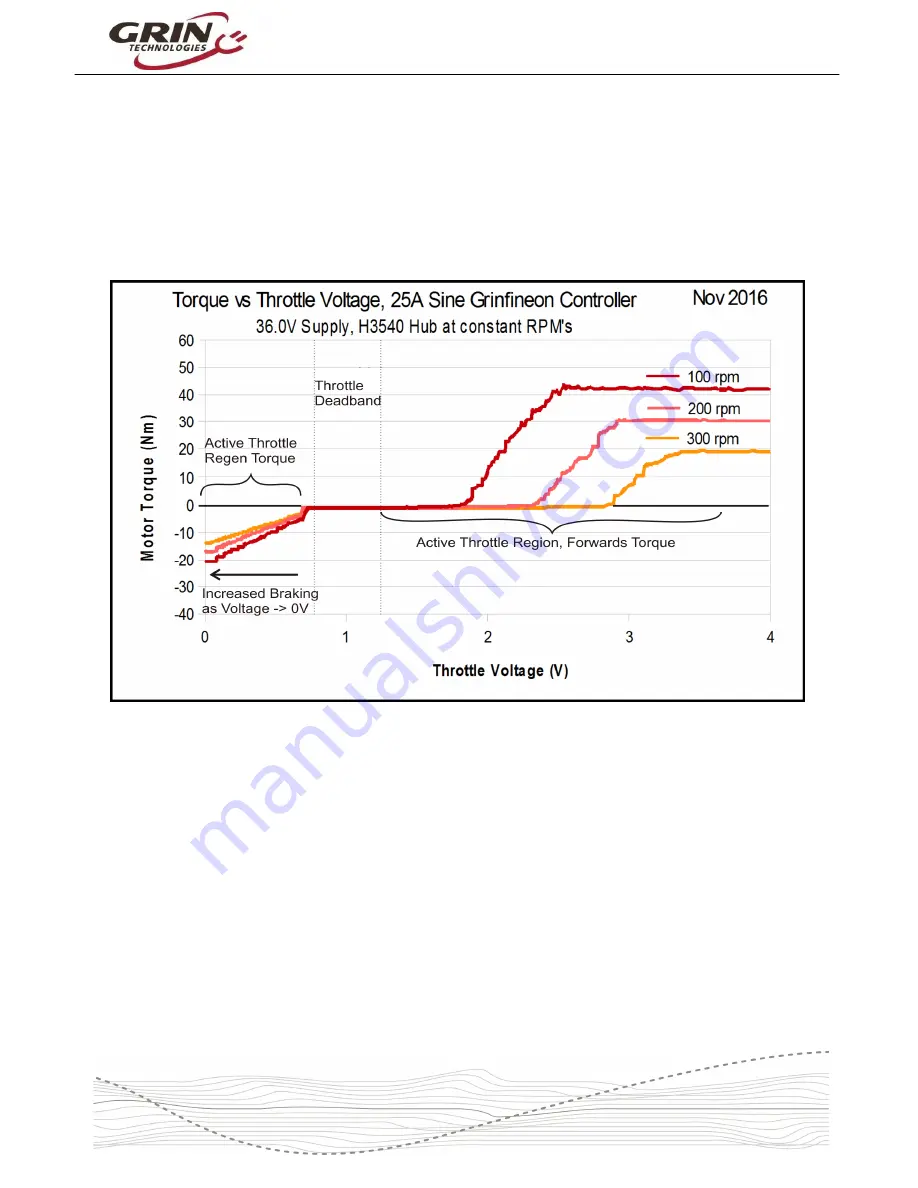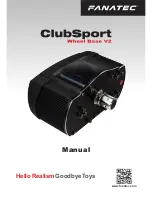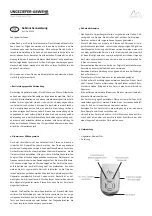
SINEWAVE GRINFINEON CONTROLLER MANUAL
Rev 2.1
-13-
3.5
Proportional Regen via 0-0.8V Throttle Signal
The second method to engage regen is with a throttle signal that is less than 0.8
Volts. Normally a Hall Effect throttle will only swing from 0.9V to about 3.6V,
leaving the range of 0.0-0.9V unused. In the Grinfineon controllers, this unused
range is mapped to regenerative braking, with regen starting below 0.8V and
then increasing to a maximum as the throttle signal goes down to 0.0V. This can
be seen in the graph below showing the torque measured from a hub motor as
the throttle signal is swept from 0.0V to 4.0V.
Figure 13: Regen intensity for throttle 0V-0.8V
The test was done with the motor spinning at 100, 200, and 300 rpm. You can
see that at lower RPMs, the breaking intensity was higher for a given throttle
voltage.
Even though the regenerative braking intensity is reduced at higher speeds, the
actual regen current flowing into the battery pack increases at high speeds as
there is more mechanical power being converted into electrical energy.
You can see this relationship clearly in Figure 14, which shows both the torque
and the amperage flowing back into the battery at 4 different levels of throttle
regen (0.0, 0.2, 0.4, and 0.6V) versus the motor RPM. It also shows mow much
regen current and braking force you can expect from the fixed ebrake input
switch, which is shown by the dashed black lines.





































